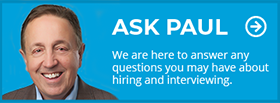2024 Lighting Jobs Outlook
Posted 1/11/2024
A panel of lighting professionals agrees that strategic hiring is moving full-steam ahead in the New Year
I think most of us would agree that the last three to four years have been nothing if not interesting! This is our 11th year looking ahead at the jobs and hiring market for lighting, electrical and controls. We have been fortunate to have highly respected leaders and professionals in our industry contribute to the LD+A “Lighting Jobs Outlook” in the past, and 2024 is no different. Our panel this year consists of AC Hickox, LC, CLD, Member IES, IALD, LEED AP BD+C (vice president/managing principal, Domingo Gonzalez Associates); Thomas Ike (executive vice president, Lutron Electronics); Geoff Marlow (president, Smart Lighting Solutions); Salwa Osman, LC, Assoc. AIA (vice president/Property & Buildings/lighting design lead, WSP); Francois-Xavier Souvay (founder, president and CEO, LMPG inc.); and Jessica Swiger (vice president of Sales, EGLO USA). Thank you to these lighting experts for sharing their thoughts and projections regarding the hiring and employment market for the year that lies ahead.
What positions will be in most demand in 2024?
Francois-Xavier Souvay: I believe it will be optical engineers, controls product managers, AI software engineers and manufacturing automation engineers.
Thomas Ike: Electrical, mechanical and software engineering roles will continue to be in high demand. We also see increasing demand in the area of data analytics.
AC Hickox: Specialized lighting design education is terrific—there is so much to learn—but in our [lighting design] practice, generalists are in demand, those individuals who can consider the implications of their lighting design decisions on the project as a whole.
Salwa Osman: We anticipate some 2023 trends to continue and early career lighting designers will continue to be in high demand. However, the most coveted positions—and the most difficult to fill—will probably be mid-level designers who’ve acquired a level of technical ability, not to mention soft skills. I believe all of this will be very much in demand, especially if the institutional market sectors continue to dominate.
Geoff Marlow: Continued project shifts in design, timing, lingering supply chain issues and pricing have introduced increasingly redundant work to inside teams. These inefficiencies forward the subsequent demand for greater inside intervention and personnel.
Hickox: [Also] lighting designers who are multi-disciplinary thinkers. Our field demands professionals who can evaluate design problems and develop appropriate options, convey concepts accurately to architects, understand relevant codes and other constraints and communicate effectively with engineers, manufacturers’ representatives, contractors (especially when working on design-build projects) and colleagues.

What positions will see a reduction in demand?
Ike: We don’t see an area where we will have a reduction in demand. We will continue with strategic hires in every area of the company.
Souvay: I don’t see a huge reduction in positions in demand, but a stability to a slight reduction in the assembly workforce due to the manufacturing automation that will offset the labor shortage challenges for future growth.
Osman: I don’t see a reduction in demand for any particular position, whether or not we avoid an economic downturn in 2024. The ability to embrace change and take on new, diverse skills will remain key to any role.
Marlow: Any position or activity not directly adding value to the customer experience will need to be evaluated during uncertain times. Associates must be relevant to the market and disciplined in their connectivity.
It has been a “candidates’ market” in lighting and electrical for the past dozen years. Do you see any change or expect that to continue?
Osman: We don’t anticipate seeing a sweeping change for lighting at least—I think it is somewhat more challenging for electrical engineering, though. It’s imperative that firms continue to invest in employee engagement and everything it entails, rather than focus primarily on competitive salaries and benefit packages.
Marlow: Great candidates are always in demand. Candidates—pay attention to fit, transitional leadership teams, and take a longer-term view around leaning your ladder and career against the right building. Look for folks that can help you grow professionally. “Speed dating” might be fun, but it’s not a sustainable or rich relationship.
Souvay: I think it will remain a candidates’ market for the top talent, no matter the economic situation.
Jessica Swiger: I think this will maintain. Expertise in any industry is a plus as employers seek to fill roles. Lighting makes this a key strength for a candidate between technical knowledge, decorative insights and trend knowledge, and further, the history to understand the landscape this market has been navigating over the past several years.
Hickox: The candidates’ market has forced companies to up their game. We’ve seen smart employers reduce working hours, offer better benefits, emphasize voluntarism, improve their offices to render shared spaces more inviting. We don’t see any of these changes as fads. Candidates are well-versed as to what they can expect from an employer. We anticipate that the candidates’ market or candidate awareness concepts are here to stay.
Do you anticipate the “short career stays” of employees that many companies saw during the pandemic era to continue or WILL WE begin to see longer employment tenures?
Marlow: We can see, in our market, that some folks are actually hiring for short stays—late career hires banking on the short-term value of the relationships the candidate brings. Excessive payrolls and spends—New York Yankees payrolls with risky return on investments, capitulation to terms that may not benefit the customer or market, and ever-changing leadership teams temporarily making structural changes before exiting to their next venture.
Swiger: I anticipate both. When I talk to candidates, there is a desire to find growth consistently. Some say they want to find the culture and challenges to grow within an organization like their parents’ generation had the privilege to experience. Today, our environment offers so many various capacities for growth with varied ways of working—hybrid, remote—and education within their industry or beyond at their fingertips. Retention should be a priority for us to gain the output of a tenured and invested employee, and equally, we should always be working to help our teams grow to their potential within and be ready to help them navigate the next steps in their career, wherever that may be.
We should always be working to help our teams grow to their potential and be ready to help them navigate the next steps in their career
—Swiger
Souvay: I believe that the new generation is looking for a work/life balance and that the companies that will be able to offer great work challenges and advancements combined with work/life balance will be able to build long-term relationships with their employees.
Do you anticipate hiring more contract employees, fewer or about the same as you did in 2023?
Souvay: The same.
Swiger: Contract work is an attractive option for both the employer and the contractor. It allows both to invest and test the waters on the role or project, and then determine a future engagement if appropriate. I sense this could be a resurfaced approach in the current environment, providing safety to both.
Hickox: To date, we haven’t hired contract employees and don’t have any immediate plans to do so, but we’ll keep our options open should the need arise.
Marlow: The landscape is unclear. I believe that most will continue to right-size to the evolving view. If that means a contract employee, we’ll evaluate the option. I think that some may move full-time “support” employees to contract employees—applications, administrative or marketing.
What is your current in-office/remote-work model and do you see that changing in the year ahead?
Swiger: We maintain a hybrid environment. I think this remains as it allows those who desire an in-office experience the access to an office every day. It also allows us to recruit talent wherever they currently live, which broadens our talent and tenure capabilities.
Osman: Our firm has adopted a hybrid model with three days in office and the flexibility to choose two days a week to work remotely. In-office days are geared for meaningful team collaborations and cultivating company culture. We don’t see this changing for the near future—the benefits of remote work are too numerous to list here, and I think our agile work environment with unassigned seating will continue to offer benefits and value to the whole organization.
Hickox: During the pandemic we discovered just how efficient the work-from-home model could be, but we’ve also seen a gradual drift back to the office for a few reasons. One—to keep up with our clients, many of whom are fully in-office, and now expect in-person meeting attendance. Two—to facilitate lighting fixture sample evaluation and mockup creation. Three—to enable on-boarding of new hires. In-person collaboration is just somuch more nuanced and beneficial. Four—many younger employees prefer to work in an office setting with a “critical mass” of colleagues around. However, when we have days with back-to-back virtual meetings or just need focus time, we work from home. We’ve struck a balance by encouraging attendance at the office several days per week while supporting staff who need to work remotely.
Ike: We are currently on a hybrid work program. Many people in our company have been back in the office full time for 2023. With a highly collaborative culture focused on coordination between functional groups and employee development, this trend will continue in 2024.
We’ve struck a balance by encouraging attendance at the office several days per week while supporting staff who need to work remotely
– Hickox
Marlow: We have a hybrid model, too. Culture, creativity and competency are hard to fully develop when entirely remote. We also find that associate interaction is energizing and developmental for everyone.
Souvay: Hybrid mode is here to stay, thus seeing more and more employees coming back to the office to work as a team in-person.
Do you see AI replacing certain positions in 2024, and, if so, which positions?
Hickox: Replacing? No. Lighting design requires too many skills that require accurate perception and communication. Augmenting? Yes, particularly for conceptual image generation, provided that we can verify the results of what’s been generated via a healthy skepticism.
Marlow: We do not see AI replacing any positions in 2024. AI is a work in process—worth keeping an eye on and ensuring that where it adds value, we integrate it into technology platforms. For us, AI is not in a position to replace people.
Souvay: I believe that AI will be a must and is inevitable in order to face the labor shortages that we will continue to face due to demographics.
Ike: We view AI and the data sets as tools that can help us be more efficient. I don’t foresee AI eliminating any positions in our company in 2024.
Swiger: It is definitely being explored. Currently, I see it having an impact on content creators and marketing roles.
Osman: Not in 2024! We see potential for AI augmenting our service offerings—mostly conceptual design proficiencies, but absolutely not replacing any positions in the next several years.




